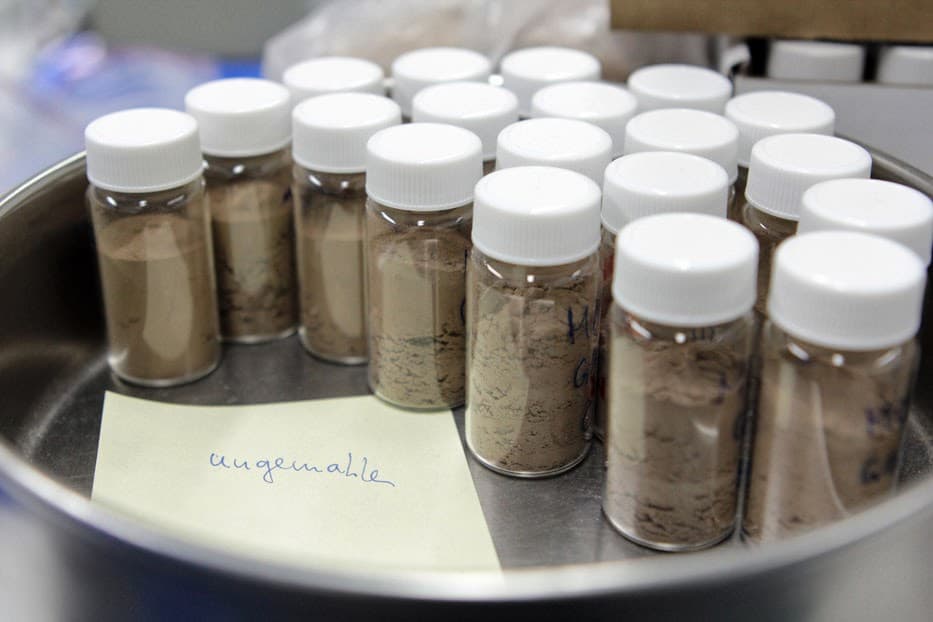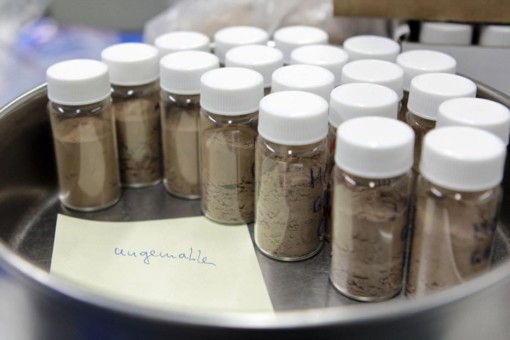Linking biodiversity and land use to soil functions

Soils contribute to the functioning of ecosystems with a variety of important services. Soils are the habitat for plants. In addition, they are the habitat for a large number of soil organisms. They also play an important role in carbon and nutrient cycling and are an important humus store. Soil properties can therefore influence species diversity, and conversely, species composition influences soil biogeochemical processes. The response of biodiversity and ecosystem functioning to intensification of forest and grassland management will therefore depend on the interaction between abiotic soil properties, soil organisms, and aboveground organisms. The core soil project provides crucial information on the abiotic soil environment and observes whether soil functions change as a result of land management. We pay particular attention to soil organic matter formation, storage, and turnover, as these play a central role in soil fertility and climate change mitigation.
- Basic characterization and monitoring of soils in the biodiversity exploratories and their abiotic soil properties
- Determination of soil functions related to carbon and nutrient cycling
- Determination of litterfall and litter quality in forests
The core project soil supports answering of the following overarching research questions:
- How important are abiotic soil conditions for shaping above- and belowground biodiversity?
- What is the impact of management intensification for ecosystem services like nutrient cycling and soil carbon sequestration?
- Are there potential interactions between management effects, on ecosystem services and other global change drivers?
- What are the mechanisms and feedbacks regulating ecosystem service provision and what is the role of above- and belowground organism and their diversity therein?
All core projects provide important basic information on land use, diversity and ecosystem processes (long-term monitoring). This information is made available to the contributing-projects for research into more detailed questions.
Service for other research projects of the Biodiversity Exploratories:
- The core soil project collects information on soil properties and soil-related ecosystem functions at all 300 experimental plots (EPs) of the Biodiversity Exploratories.
- In each project phase of the Biodiversity Exploratories project (i.e., every 3 years), we organize a large coordinated soil sampling in which all soil-related projects of the Exploratories participate. All groups subsequently work with the same homogenized soil samples. Since 2011, the upper horizon of mineral soil (0-10 cm) has been sampled at all 300 EPs and the organic layer of all 150 forested EPs. Since 2020, soils in the newly established multi-site experiments in forests and grasslands (FOX, REX, LUX) have also been sampled. In 2023 for the first time the subsoil (10-20, 20-30, 30-50, 50-70, 70-100 cm) of all 150 medium intensive plots will be sampled.Maintainance of the central soil archive with air-dried samples of mineral soil and organic layer (collected in 2006, 2008, 2011, 2014, 2017, 2021) and leaf litter litter (since 2015).
- Contribution to synthesis activities in the Biodiversity Exploratories. The core project-soil provides not only important data to characterize the study area and important soil functions related to carbon and nutrient cycling but also contributed to the synthesis with soil science expertise.
Experimental plots (EPs)
- Monitoring of soil properties based on samples taken as part of coordinated soil sampling (pH, bulk density, stone content, water content, root content, clay content, organic carbon, inorganic carbon, total nitrogen, total sulfur, organic carbon, nitrogen and sulphur stock in soil).
- Monitoring of aboveground litterfall on all forest plots by collecting litter from the litter traps three times per year; determination of litterfall of branches, twigs, fruits and leaves; CNS analyses of leaf litter
- Determination of extracellular enzymes involved in the cycling of C, N, S and P in all 150 forest plots (beta-glucosidase, N-acetyl-beta-D-glucosaminidase, sulfatase, phosphatase)
- Determination of microbial CO2 fixation in all 150 forest plots
Pilot study on arable land
- The long-term strategy of the Biodiversity Exploratories is to extend the management intensity gradient to agricultural sites. In the upcoming phase, concepts for how to include the various kinds of agricultural management (e.g. different tillage regimes, different crop rotations etc.) in the overall framework of the BE will be developed. Therefore, 10 pilot sites will be established in each region on which first soil analyses are conducted to help with the final design and site selection.
Service of past phases
- Soil inventory on all 3000 grid plots (2006-2008)
- Enzyme activities in the entire soil profiles (2008)
- Determination of soil respiration (laboratory incubations) (2011)
- Isotope signal (14C/13C) of respired CO2 (2011)
- 13C content of soil organic matter (2011)
- Determination of soil texture (2011)
- Decomposition of root litter (2011)
- Decomposition of 13C labelled root litter (2011)
- Root chemistry (2011)
- Water holding capacity (2011)
- 14C content of roots (2011)
- 14C content of soil organic matter (2011, 2014, 2017)
- Soil organic matter mineralization (laboratory incubations) (2014)
- Soil priming (2014)
- Microbial biomass (2014, 2021)
- Accumulation of carbon on soil minerals Installation of mineral bags (2015)
- Cation exchange capacity (2017)
- Nutrient leaching (2017)
- Determination of soil respiration in the field (field measurements) (2017)
- Litter decomposition experiment with tea-bags (2021)










